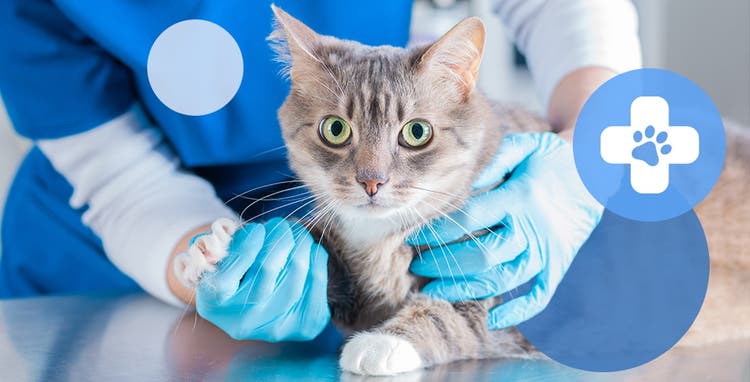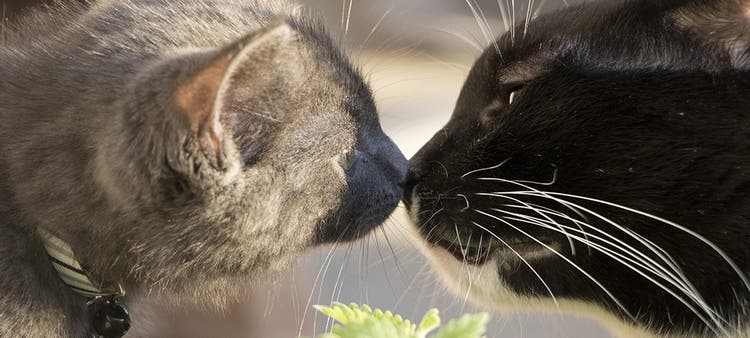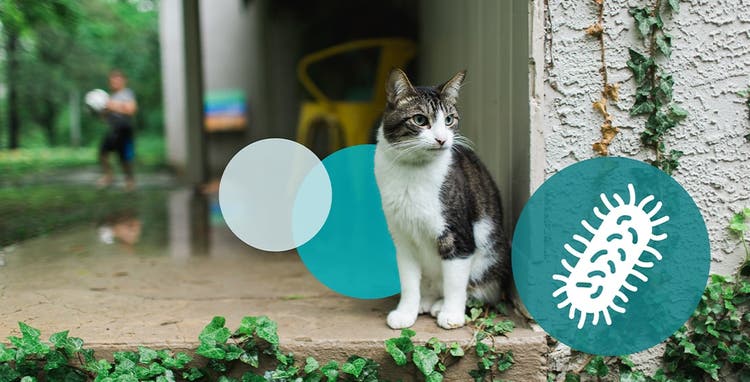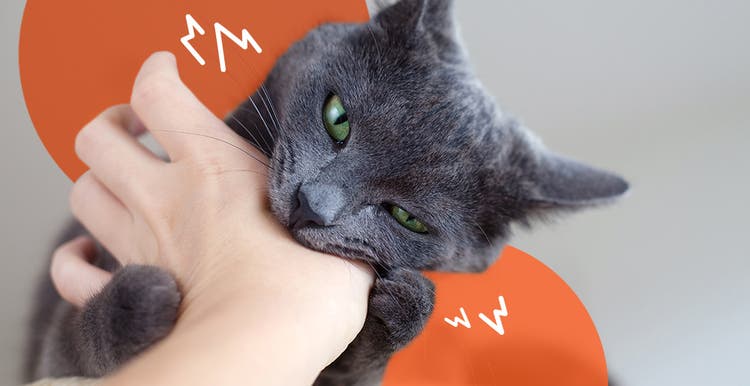Learn about interacting with feral cats.
While it’s generally not possible to tame a feral cat, with time and commitment (and lots of food!), the cat may become more relaxed and friendly. If you’ve noticed a cat wandering your neighborhood or hanging out on your porch, you may wonder whether the cat is feral or a stray, and whether it’s safe to interact with them.
Learn how to tell the difference between a feral cat and a stray, the risks feral cats pose to humans and domesticated pets, and how you can help them.
How Is a Feral Cat Different from a Stray Cat?
The biggest difference between stray cats and feral cats comes down to their level of socialization to human beings. A stray cat has been abandoned by or separated from its owners; they may now be living outside on their own, but because they had a home once, they’re used to interacting with humans.
Like stray cats, feral cats also live outdoors on their own, but the key difference is that they have never been socialized to humans and are therefore probably the offspring of other stray or feral cats. This lack of human socialization can make feral cats wild and unapproachable.
Feral and stray cats typically behave differently when humans are near.
Feral cats:
- Generally avoid humans
- Can appear frightened or hesitant around humans
- Will likely take a protective stance, staying low to the ground and crouching
- Often exhibit little to no eye contact, purring or meowing around humans
Stray cats:
- Might approach humans
- Might be friendly or curious around humans
- Likely to behave like a house cat, meowing and making eye contact around humans
Both strays and feral cats can be loners or part of a colony, and they will hunt or take food wherever they can — whether it’s from garbage cans or your pet’s outdoor feeding station.
Can a Feral Cat Become a House Pet?
You may have a chance of taming or domesticating a feral kitten. However, it’s not generally recommended to tame a feral cat — and it’s usually not possible to tame an adult one. Feral cats aren’t used to human contact, and they probably won’t ever be as docile and friendly as a domesticated cat.
A feral cat will probably never wish to move into your home, but they may eventually become confident enough to sleep in a less-confining space like a garage, shed or utility room with easy access — as long are there aren’t humans around.
Do Feral Cats Pose Health Risks to You or Your Pets?
It’s difficult for humans to catch diseases from feral cats since they don’t often come in physical contact. However, because feral cats can carry diseases, worms and fleas, it is possible for them to pass infections on to your domesticated pets.
Be aware that if you already have a cat or dog, the presence of a feral cat may cause other issues, too. Your pet may be upset by a feral cat that visits regularly, and a feral cat may not tolerate them and could act aggressively. If this is the case, your pets and the feral cat may need to be kept apart, or, more likely, the feral cat may need to be relocated elsewhere.
How Can You Help Feral Cats?
The first step is to inform your local cat protection or feral cat rescue shelter. They’ll offer advice and will likely follow an official “trap, neuter, return” (TNR) program.
TNR specialists will catch the cat using a baited cage. They’ll then sedate the cat, check them for a microchip, examine them for diseases and treat them for worms and fleas. They will also spay or neuter them so the animal can’t add to the local feral population. Some of these programs may clip the cat’s ear, which helps animal control officials quickly and easily identify stray and feral cats that have already been spayed or neutered. Finally, the cat may also have to be shaved if their hair is matted or badly infested with parasites. Then, they will be returned to the outdoors or possibly relocated to another area.
While trying to tame a feral cat isn’t a good idea, you can find plenty of cats in shelters and rescues that need a warm, welcoming home, including older cats that tend to get along with other pets you already have. If you’re ready to add a pet to your home, consider saving a rescue cat — they’ll be sure to thank you with lots of love.






